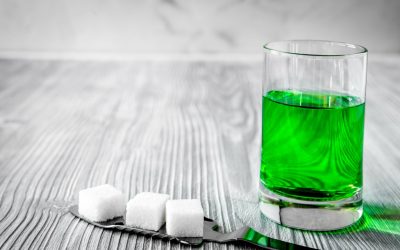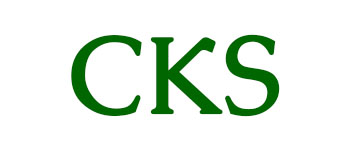How Does Alcohol Affect Your Mental Health?
Guía Para Apuestas Con Blockchain: Análisis Detallado 2023
mars 30, 2022Content
Mental health conditions cause distress or setbacks socially, at work, and in other meaningful activities. Addictive substances like alcohol affect the pleasure and reward center of the brain, triggering an increase in dopamine levels. The harmful use of alcohol can also result in harm to other people, such as family members, friends, co-workers and strangers. In some people, the initial reaction may feel like an increase in energy. But as you continue to drink, you become drowsy and have less control over your actions.

As with other addictions, groups are very helpful, not only in maintaining sobriety, but also as a safe place to get support and discuss challenges. Sometimes treatment programs for co-occurring disorders provide groups that continue to meet on an aftercare basis. Your doctor or treatment provider may also be able to refer you to a group for people with co-occurring disorders. Drug and alcohol abuse often stems from misguided attempts to manage stress.
Helping a loved one with a dual diagnosis
Reach out to your physician, mental health professional, or addiction specialist for guidance. Results of the 2018 National Survey on Drug Abuse and Health found 9.2 million adults aged 18 and older had a co-occurring mental health disorder and alcohol or drug addiction. This is a significant increase from the 2015 survey, which reported co-occurring disorders in about 7.9 million adults. When an individual has both a mental illness and an alcohol addiction simultaneously, the clinical diagnosis is co-occurring disorder, comorbidity, or dual diagnosis. Co-occurring disorders can be difficult to diagnose, as one disorder may mask symptoms of the other.
- Uncontrollable alcohol cravings lead to (or worsen) mental health issues, in this stage, such as irritability, aggression, depression, and anxiety.
- No matter how hopeless alcohol use disorder may seem, treatment can help.
- Our Massachusetts rehab offers detoxification services for alcoholism to provide patients with a safe, clean, and medically-managed environment where they can recover from withdrawals.
Co-occurring AOD-use disorders represent the most frequent and clinically most significant comorbidity among mentally ill patients, and alcohol is the most commonly abused drug (Cuffel 1996). Undoubtedly, the fact that alcohol is readily available and that its purchase and consumption are legal for anyone age 21 and older contributes to its widespread abuse. Furthermore, according to the National Comorbidity Study, people with mania are 9.7 times as likely as the general population to meet the lifetime criteria for alcohol dependence (Kessler et al. 1996).
How Alcohol Affects the Brain
For example, there is some evidence that those who abuse opioid painkillers are at greater risk for depression and heavy cannabis use has been linked to an increased risk for schizophrenia. If you or a loved one is struggling with a co-occurring mental health disorder and alcohol addiction, it’s important to remember that you are not alone. Evidence-based dual diagnosis treatment can lead to positive health outcomes. They may be able to help determine one’s medical needs and perhaps refer them to a suitable rehab center. Additionally, one may consider visiting the SAMHSA treatment locator to search for programs by zip code.

A small difference arises in the rate of dependency; the more alcohol an anxious person consumes to soothe the anxiety, the greater the quantity required to withstand anxiety symptoms. They may also avoid treatment, fearing social interaction and confrontation. When either a patient or medical professional isn’t equipped with the right information, the result is focusing too much attention on the immediate problem.
Renewal Center for Ongoing Recovery
You may feel like doing drugs is the only way to handle unpleasant feelings, but HelpGuide’s free Emotional Intelligence Toolkit can teach you how to cope with difficult emotions without falling back on your addiction. SAMHSA’s mission is to lead public health and service delivery efforts that promote mental health, prevent substance misuse, and provide treatments and supports to foster recovery while ensuring equitable access and better outcomes. It’s a disease of brain function and requires medical and psychological treatments to control it. Roughly one third of individuals struggling with alcohol abuse also suffer from a mental illness. It is not uncommon for an addiction to alcohol to also come with a mental health dual-diagnosis.
Is alcohol causing depression?
Alcohol can not only lead to depressive symptoms but also worsen depressive symptoms in people who already experience them or in those who may be genetically vulnerable to depressive disorders. If depressive symptoms are caused by drinking alcohol, they may stop after significantly reducing or stopping alcohol use.
Definitions of other terms used in this article can be found in the glossary, p. 86. Behavioral therapy, also called talk therapy or alcohol counseling, is recognized by the medical community as one of the most effective methods of alcohol rehab. Alcohol use disorder (AUD) is listed in the Diagnostic and https://dorama-fan.ru/dorams/korea/istoriya-lyubvi-devchonok/ Statistical Manual of Mental Disorders (DSM). The DSM is an authoritative guide that mental health professionals in the US use to diagnose mental health disorders. Alcoholism is considered a disease that progresses in three stages, starting with problematic drinking and ending in obsessive alcohol abuse.
How Can I Get Help for Alcoholism?
During withdrawal from heavy drinking, people may develop delirium tremens, a complication of withdrawal marked by psychotic symptoms, such as hallucinations (see Core article on AUD). Northbound’s drug addiction treatment center is aleading https://childfest.ru/forum/forum.asp?id_parent=5903&page2=5&page=42 treatment center dedicated to transforming the lives of people struggling with addiction & co-occurring mental health disorders. Medical treatment of drug addictions and alcoholism involves several evidence-based approaches.
An ARBI can also happen over the course of a short period of time, especially when the drinking is binging. Alcohol is a depressant, slowing mental and physical responses, and affecting mood, energy, coordination, concentration, and decision making. Those under the influence of alcohol are more likely to engage in risky or violent behavior and to exhibit suicidal ideation. Whether alcohol use disorder is mild, moderate, or severe is based on the number of questions answered with a yes.
